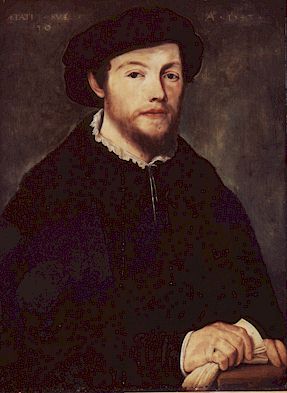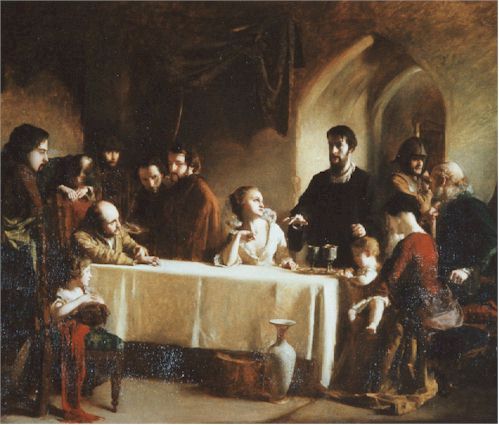George Wishart, 1513-1546
By the way, has anyone noticed the date of George Wishart's birth - 1513? Well, we have! And we are planning a commemorative quincintennial event to celebrate George Wishart's birthday on August 31st, 2013,
preliminary details George Wishart studied classics at the University of Aberdeen and worked as a
schoolmaster at the Grammar School in Montrose, where the first teaching of Greek in Scottish schools began. He taught the New Testament in Greek.
But in 1538, he was charged with heresy by the Bishop of Brechin and fled to Switzerland and Germany where he joined the followers of Jean Calvin (1509-64). He
returned to Corpus Christi College, Cambridge in 1543, and then to Scotland in 1544 as part of a mission sent by the English King Henry VIII (1509-1547) to arrange the
marriage of his son Edward (later Edward VI (1547-1553)) to the young Mary, Queen of Scots (1542-87). Wishart's story from 1544 to 1546 was told by John Knox who was his disciple and friend.....
George Wishart was a famous member of the Pitarrow family, the martyr, a powerful Protestant preacher, confidant and mentor of John Knox. While preaching the
Protestant Reform in 1546 he was betrayed to Cardinal David Beaton and imprisoned in the bottle dungeon at the Castle in St. Andrews. Subsequently he was tried for
heresy, condemned to death and burnt at the stake outside the Castle. Some weeks later George Wishart's friends conspired against the Cardinal and gained
entry to the Castle by subterfuge. They found Cardinal Beaton in his room, killed him
and hung his body from the battlements. It is said that afterwards they formed, in the Castle, the first congregation of the Church of Scotland.
The spot where George Wishart died is marked by the letters GW in cobblestones outside the Castle, and commemorated by a
Preaching throughout this part of Scotland, especially in Dundee during an outbreak of the plague, Wishart came to the notice of Cardinal
Beaton who planned an ambush for him which failed. Wishart is reputed to have said "I know that I shall finish my life in that bloodthirsty man's hands, but it will not be after this manner".
Wishart went to Edinburgh and preached at Leith where he was seized by the Earl of Bothwell, taken to Edinburgh Castle and then
handed over to Cardinal Beaton who brought him back to St. Andrews Castle. There he was condemned to be burnt at the stake.
On the fateful day the Captain of the Castle invited Wishart to breakfast and gave him bags of gunpowder to put in his clothing. The
executioner fell on his knees before the pyre to beg Wishart's forgiveness, which he gave. When the burning began the gunpowder
exploded but did not kill him straight away and his agony was prolonged. Cardinal Beaton watched from his window.
Public reaction was hostile, and George Wishart's martyrdom was the real trigger which set the Reformation in train in Scotland. For a contemporary account of George Wishart's life and death, see |


 George Wishart was born in 1513, the son of James Wyschart and Elizabeth
Learmont. His father was the Laird of Pitarrow, so he was probably born in
George Wishart was born in 1513, the son of James Wyschart and Elizabeth
Learmont. His father was the Laird of Pitarrow, so he was probably born in 